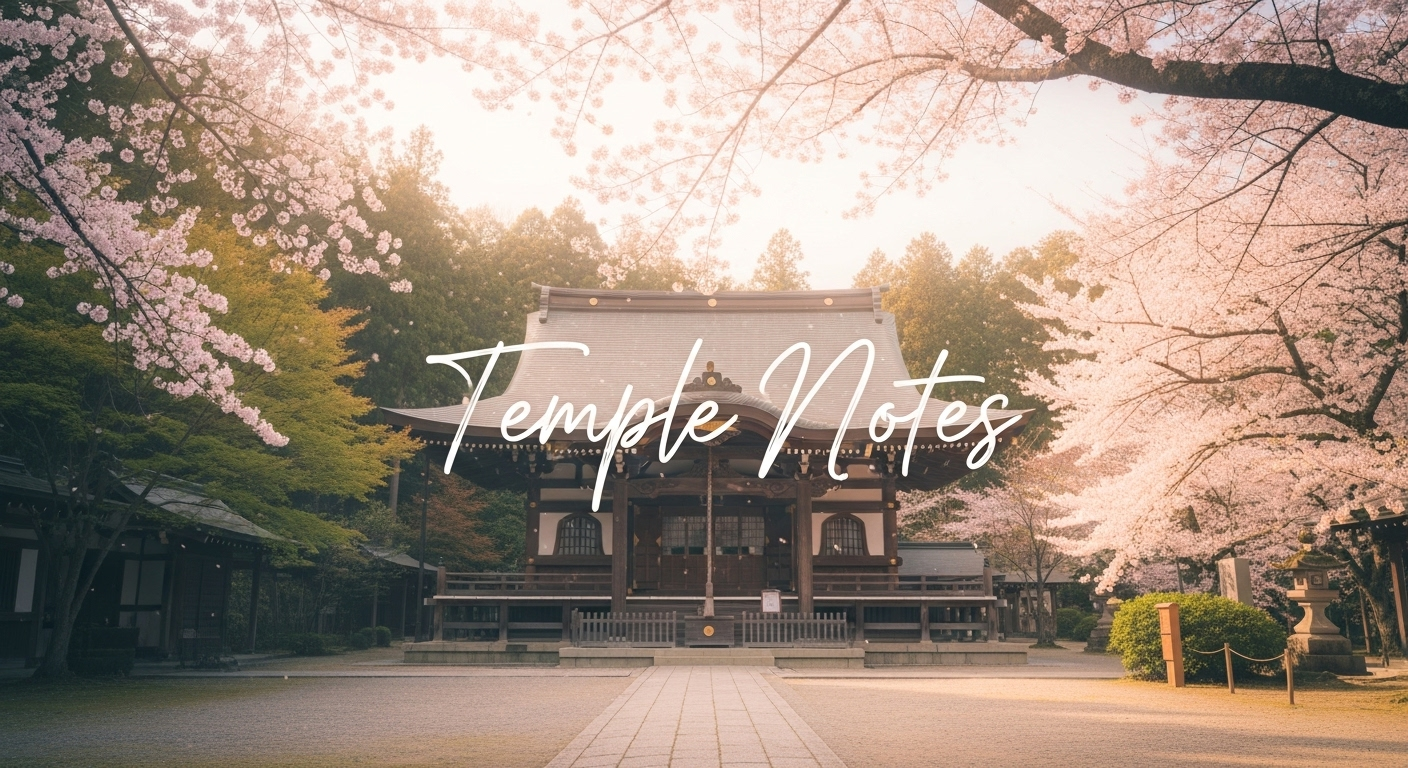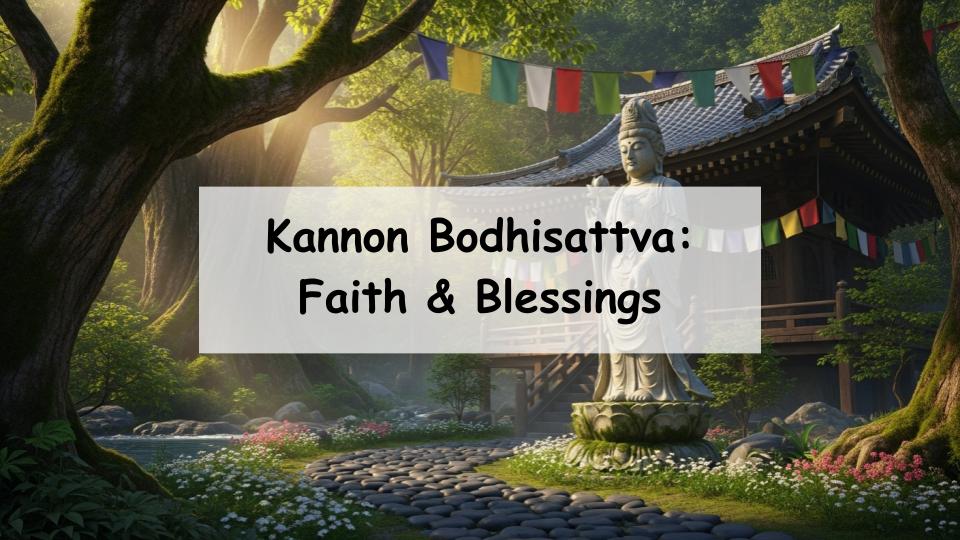When people hear the word “Kannon Bodhisattva,” many immediately think of the image of a merciful deity. Yet, in reality, the meaning, origin, and blessings of Kannon are not always clearly understood. In short, Kannon Bodhisattva has long been revered as a being who saves people from suffering, rooted in deep Buddhist philosophy and history. This article explains the meaning of the name, the origins and historical background of Kannon, the spread of devotion, and the blessings associated with this revered figure. By the end, you will understand why Kannon Bodhisattva has been cherished by so many for centuries.
What Is Kannon Bodhisattva? Its Meaning and Role
The Meaning of the Name “Kannon”
The name “Kannon” is composed of the characters for “kan” (to observe) and “on” (sounds or voices). It can be translated as “the one who perceives the sounds of the world” or “the one who listens to the cries of beings in distress.” In Sanskrit, Kannon is known as Avalokiteśvara, meaning “the lord who looks down upon the world” or “the one who responds to the cries of existence.” A “bodhisattva” refers to one who seeks enlightenment while also vowing to save all beings, making Kannon the embodiment of compassion in Buddhism.
The Compassion Symbolized by Kannon
Kannon represents the ideal of compassion. This bodhisattva is believed to respond to the cries of suffering beings and extend help in countless ways. In practice, devotion to Kannon not only offers comfort to those in need but also inspires believers to act with kindness and compassion in their daily lives.
Kannon in the Buddhist Tradition
Kannon Bodhisattva holds a central role in Mahayana Buddhism, particularly in East Asia. Revered across diverse schools of Buddhism, Kannon is often depicted as a close attendant of Amitabha Buddha, acting as a savior who assists in guiding beings toward liberation. The figure is mentioned in many sutras and rituals, reflecting its importance as a living presence in Buddhist practice.
Origins and Historical Background of Kannon
Origins in Indian Buddhism
Kannon’s roots trace back to Indian Mahayana Buddhism, where Avalokiteśvara first appeared in scriptures as a compassionate savior. Over time, this figure developed into a multifaceted deity, with various manifestations reflecting different aspects of compassionate activity.
Transmission to China and Japan
When Kannon devotion spread to China, it absorbed elements of Daoism and local traditions, gradually taking on a softer, more nurturing image. In Japan, this faith further evolved, blending with native practices and becoming central to both state protection and everyday religious life. By the Heian period, Kannon worship was deeply embedded in Japanese society and eventually gave rise to pilgrimage traditions.
Characteristics of Japanese Kannon Devotion
Japanese Kannon worship is marked by both formal temple-centered devotion and grassroots folk practices. Many temples enshrine Kannon statues, some of which are kept hidden and revealed only during special occasions. Pilgrimage traditions such as the “Thirty-Three Kannon Pilgrimage” became widespread, shaping a distinctive cultural expression of devotion.
Kannon’s Influence on Culture and Art
Kannon has inspired countless works of sculpture, painting, poetry, and performance throughout Asia. In Japan, masterpieces of Buddhist art depicting Kannon remain treasured cultural properties. The figure of Kannon has become not only a spiritual icon but also an enduring motif in artistic expression.
Faith and Blessings of Kannon
Common Prayers and Wishes
Believers often pray to Kannon for healing from illness, safe childbirth, family well-being, protection from accidents, peace of mind, and academic success. While the specific blessings may vary, the core belief is that Kannon responds with compassion to relieve suffering.
Kannon as a Symbol of Salvation
Kannon is not merely a figure who grants wishes but a symbol of salvation itself. Devotion encourages inner healing, resilience, and transformation, providing comfort to people facing life’s hardships.
Practices to Receive Blessings
Devotees connect with Kannon through temple visits, chanting sutras such as the Lotus Sutra or Heart Sutra, reciting mantras, participating in pilgrimages, or offering prayers at home. Emulating Kannon’s compassion in daily life is also considered a form of practice that generates merit and brings blessings.
The Many Forms of Kannon
The Thirty-Three Kannon
The concept of “Thirty-Three Kannon” refers to the bodhisattva’s ability to manifest in thirty-three different forms to save beings. This idea inspired pilgrimage traditions across Japan, where thirty-three temples are visited to honor each manifestation.
Thousand-Armed and Eleven-Headed Kannon
The Thousand-Armed Kannon represents the ability to help countless beings simultaneously, while the Eleven-Headed Kannon symbolizes the many ways compassion is expressed, from serene to fierce. These forms illustrate Kannon’s limitless adaptability in aiding others.
Depictions in Statues and Art
Kannon is represented in diverse artistic forms, from serene standing statues to seated figures holding lotus flowers or vases. Expressions range from majestic and regal to gentle and maternal. In Japan, many Kannon statues are enshrined as “hidden Buddhas,” revealed only during special ceremonies.
Kannon Devotion in the Modern World
Pilgrimages Across Japan
Pilgrimages to Kannon temples remain popular today, blending religious devotion with cultural exploration. These journeys provide spiritual renewal for individuals and also contribute to community and regional identity.
Famous Temples Enshrining Kannon
Major temples such as Sensō-ji in Tokyo, Kiyomizu-dera in Kyoto, and Hase-dera in Kamakura are renowned centers of Kannon worship. These temples attract visitors from around the world, offering both historical and spiritual encounters.
The Comfort Kannon Faith Provides
For many, devotion to Kannon provides a sense of reassurance in uncertain times. Prayers and rituals foster peace of mind, while temple activities strengthen community bonds. Thus, Kannon devotion continues to serve both personal and social needs.
Conclusion: The Power of Compassion and Faith in Kannon
Key Points on the Meaning and Blessings of Kannon
Kannon Bodhisattva, literally “the one who observes sounds,” embodies the act of listening to the cries of the world. From its Indian Buddhist origins, Kannon worship developed widely across East Asia, becoming deeply rooted in Japan through both temple traditions and folk practices. The blessings sought range from healing and protection to peace of mind, with practices including prayers, sutra recitation, and pilgrimage.
The Relevance of Kannon for Modern Life
Today, Kannon Bodhisattva is more than a religious figure; it is a source of comfort, cultural heritage, and inspiration. As a symbol of compassion, Kannon continues to support people in times of difficulty and offers a reminder of the transformative power of kindness. Visiting a Kannon temple or participating in a pilgrimage can be a meaningful way to connect with this enduring tradition.
A Message from the Guide

Statues of Kannon Bodhisattva can be seen in many temples. By exploring which specific form of Kannon each statue represents, you can make your temple visits even more interesting.












Comment